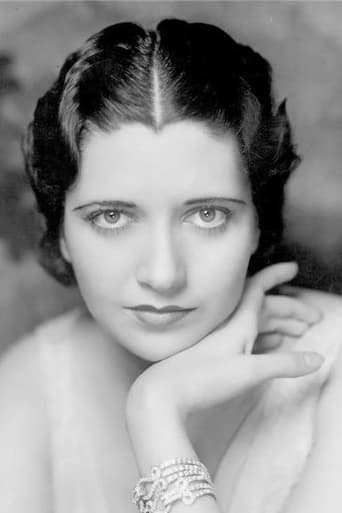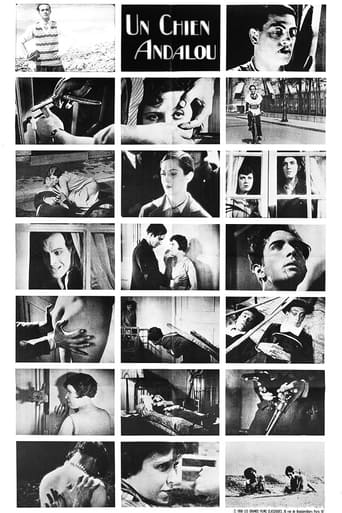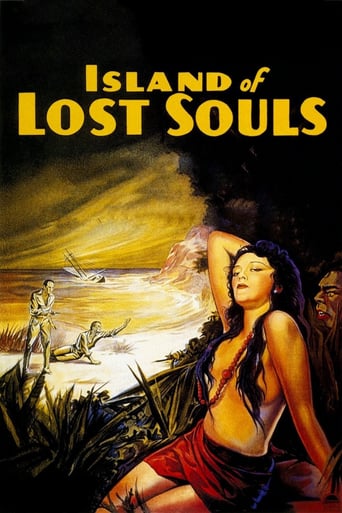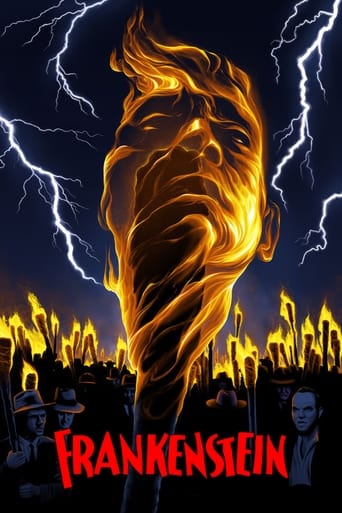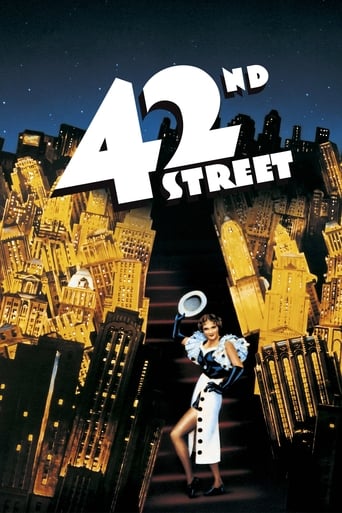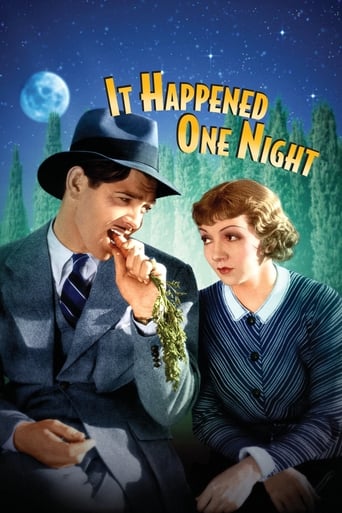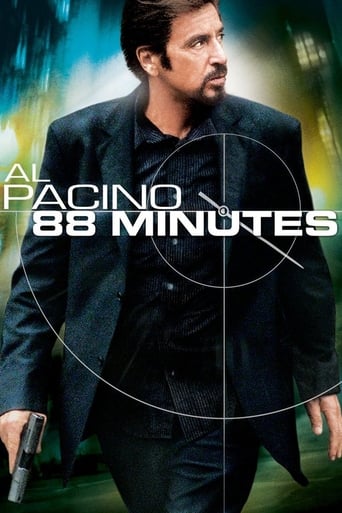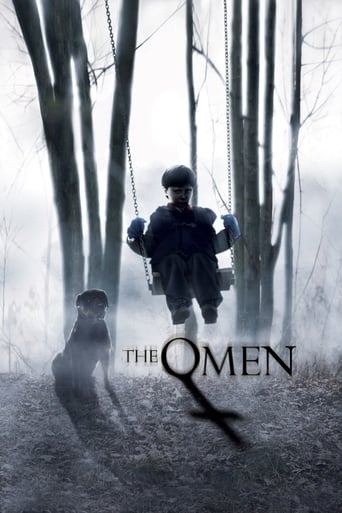

Wonder Bar (1934)
Harry and Inez are a dance team at the Wonder Bar. Inez loves Harry, but he is in love with Liane, the wife of a wealthy business man. Al Wonder and the conductor/singer Tommy are in love with Inez. When Inez finds out that Harry wants to leave Paris and is going to the USA with Liane, she kills him.
Watch Trailer
Cast


Similar titles
Reviews
Such a frustrating disappointment
Save your money for something good and enjoyable
It's an amazing and heartbreaking story.
This is a small, humorous movie in some ways, but it has a huge heart. What a nice experience.
Before the Hays code came along with their scissors and snipped the sin out of Hollywood, you would get films like this where the girls went wild, boys would be boys (Wooo!!!) and old married couples from the mid west went to New York or Paris or Monte Carlo and dropped their partners for the night for some fun with a good time girl or a gigolo. While this is not a great movie by any means, it is still a lot of fun, and it is more innuendo than actual open sinning going on.Al Jolson is the headliner at the Wonder Bar in Paris, a nightclub where the elite go to toss down a few martinis, escape from their nagging wife or forget that they are married to an older businessman who spends more time in the office than trying to have fun. Dolores Del Rio and Ricardo Cortez are the dancing team who are having a bit too intense of a time ("He Wips Her, But She Likes It!" is one of the dances they do) as he is involved with other women, most seriously bored wife Kay Francis. She is the one with the busy businessman husband, and she is very wary of the working relationship between Cortez and Del Rio.Also involved are the comic relief older couples of Ruth Donnelly and Guy Kibbee, and Louise Fazenda and Hugh Herbert. The men want to spend an evening with some pretty French girls, while the two women flirt with two sleazy gigolos. They spend the evening trying to get rid of the other, which results in some comical double entendres. Fifi D'Orsay is one of the French working girls which must have inspired Stephen Sondheim to cast her 36 years later in "Follies" on Broadway to sing "Ah, Paris!".After Jolson gets things started with the title tune, we are treated to some glorious production numbers. The classy "Don't Say Goodnight" just seems to go on forever (spacewise, not lengthwise) with its use of mirrors on three sides of the stage, and is truly a romantic moment. Much more controversial (other than the sudden dance with two men, the one cutting in pushing the woman out of the way) is the "Goin' to Heaven on a Mule" which utilizes every black stereotype there is. A huge white heaven with a smaller black heaven next door (segregated, you know...) and a heavenly nightclub set on Heaven's own Lennox Avenue. Then, a black-faced Hal LeRoy tap dances out of a giant watermelon while Jolson (you expect him in blackface) feasts on a chicken roasted for him in which you see the poor bird plucked by a machine & skewered onto a roaster. Utilized in the documentary "It Came From Hollywood" as an example of Hollywood's bad taste in making some musicals, it has survived its controversy and not been exorcised out of prints. Most audiences simply look at it as an artistic triumph in spite of its bad taste that has taught us lessons and is an example of where Hollywood used to be and has moved far away from. Still, it is light-hearted compared to the same year's "Pickin' Cotton" from "George White's Scandals" in which a huge mammy character raises her skirt so a dozen or so black-faced children can run out from underneath it!When Jolson is in front of an audience singing, there is a joy exhilarating from him like the shining of a star. He isn't so comfortable in the serious acting sequences. Kay Francis, obviously upset by being secondary to Del Rio, suffers as a result of her unhappiness with the role, although the bitterness she feels somehow matches that of the character. What makes it worse is that Francis and Del Rio sometimes appear to have similar looks (with the widows peak hairstyle) but Del Rio is much more exotic looking. Dick Powell is on only to sing a few songs and adds only incidental plot development. Cortez once again plays a sleazy character (much like the same year's "Mandaly", which co-starred Francis in a much better part) who is not so likable. The four older character actors offer much needed humor to the somber plot which includes a murder, a suicide and eventually cover up. As Jolson would say, it's all in a night's work.
I am very fond of Al Jolson, But the only film I have seen with him in it is this one. I like it quite a lot but I found it very strange; what the hell was a murder story doing in a 1930's musical? Well never mind about that, just enjoy the rest of the film, with its fantastic score by Harry Warren (music) and Al Dubin (lyrics). But there is yet another thing which I wasn't particularly fond of in this film which was Dick Powell who, I think, is overrated. If you don't like minstrels then don't see this film (it has Al Jolson in it). Despite being a great lover of music, I am not terribly fond of some of Busby Berkely's stuff, His dance sequences for example, tend to be a bit over-long. Despite the handicaps that I have written here, this film is very watchable. Enjoy. 8/10
'Wonder Bar' stars Al Jolson in a film with more plot than usual, and it's one of his best efforts. Jolson's films are notoriously tainted by racist blackface routines: in 'Wonder Bar', this material is completely avoided until the very end of the film, when we get a long blackface number called "Goin' to Heaven on a Mule". If you fast-forward through this to get to the last few minutes of the film (tying up some loose ends in the plot), you'll be better off.Several Warner Brothers movies of this period ('Two Seconds', 'Central Park') featured a 'book-ends' structure in which the film's opening shot and closing shot are the same camera set-up. We get a variation on that structure here. The first couple of reels of 'Wonder Bar' set up the conflicts between the characters. Then, about a third of the way into the film, we get the first 'book-end' as Jolson's nightclub (the Wonder Bar) opens for the evening: a liveried doorman unrolls a red carpet and salutes us. At the very end of the film, after the Wonder Bar has closed for the night, the doorman rolls up the carpet and salutes us again.I'm a long-time fan of Dolores del Rio, an immensely talented actress who was also exceedingly sexy. Here, she gives the best (and sexiest) performance I've ever seen from her, as a cabaret dancer who is bullied and exploited by her dance partner (the very hissable Ricardo Cortez). Jolson is in love with del Rio (this is cleverly depicted with an unusual visual device), but she doesn't return his love.Dick Powell is less annoying and less obtrusive than usual. Ditto the raccoon-eyed Kay Francis, whom I always dislike. SPOILERS COMING. There's an amusing subplot with four Warners stalwarts (Guy Kibbee, Hugh Herbert, Louise Fazenda and the splendid Ruth Donnelly) as two stodgy married couples on holiday. The husbands conspire to sneak out for a night on the tiles while the wives are asleep; the wives plot to sneak out while the husbands are asleep. Unfortunately, after setting up this very funny situation, there's no pay-off for it.Veteran character actor Robert Barrat plays a role well outside his usual range, with only partial success. Somewhat implausibly, Jolson allows Barrat to commit suicide because this will help Jolson conceal a murder committed by del Rio. We're meant to admire Jolson for this.I shan't comment on the protracted blackface routine late in the film, except to say that it's a *dull* number apart from its offensiveness. The effeminate tap-dancer Hal LeRoy performs, nearly naked, in blackface and full body make-up. Instead of painting a white man to look like a black man, couldn't Warners have hired a black tap-dancer instead? Plenty of black men were much better dancers than Hal LeRoy.Much earlier in the film, there's one very surprising gag involving Jolson and two gay men. During his long career as a stage performer, Jolson frequently worked 'lavender' material into his act. Like the British comedian Max Miller, Jolson was a heterosexual performer who deliberately led audiences to suspect he might be homosexual. (Apparently the rumours were good for the box office.) Jolson employed 'camp' humour and gay jokes frequently onstage, but so far as I know 'Wonder Bar' is the only time he ever did this in a film. I'll rate 'Wonder Bar' 8 points out of 10. I was tempted to knock off several points for the blackface routine, but I put them back on again for Dolores del Rio's very erotic performance.
The storyline of this film is fairly ordinary: something of a "Grand Hotel" set in a Paris cabaret in the 20s. What makes it noteworthy -- besides the opportunity to watch Al Jolson in action -- is the jaw-droppingly insensitive closing number, "Goin' to Heaven on a Mule," staged by Busby Berkeley in characteristically over-the-top fashion. A blackface Jolson takes us through a version of heaven with Pork Chop Orchards and Possum Pie Groves, automatic fried chicken, dancing watermelons, and a streetcar going from the "Milky Way to Lenox Ave." And in the midst of it all, a winking Al grins over a copy of a Yiddish newspaper, just to let us all in on the joke.The number makes the Lincoln's Birthday number in "Holiday Inn" look tame. Even Stepin Fetchit suddenly appears endowed with a singular dignity. Watching it helps one to understand the unhappy history of race relations in this country.Which is why I think that the film should be seen, if only in order for younger Americans to understand just where all that racial anger comes from. This is our cultural history, and we shouldn't run from it. It ought to be screened in every cultural studies class in America!



